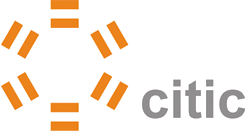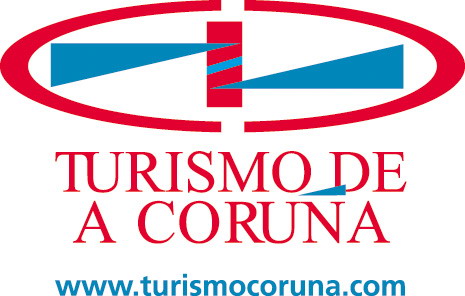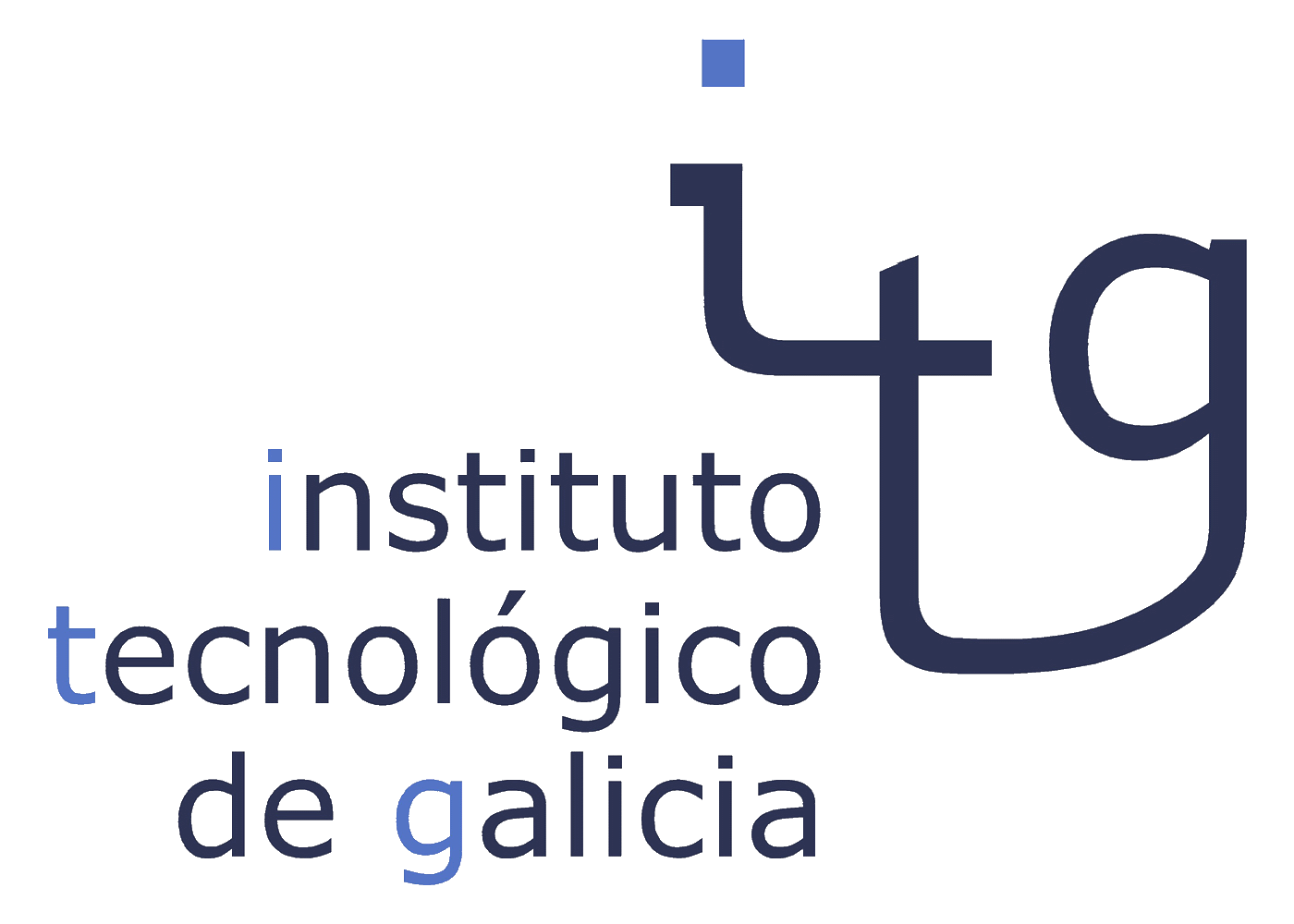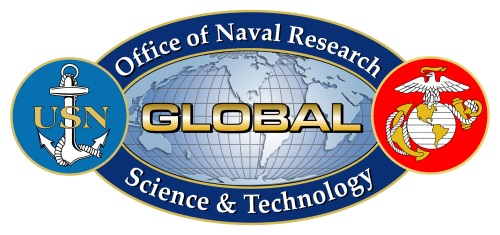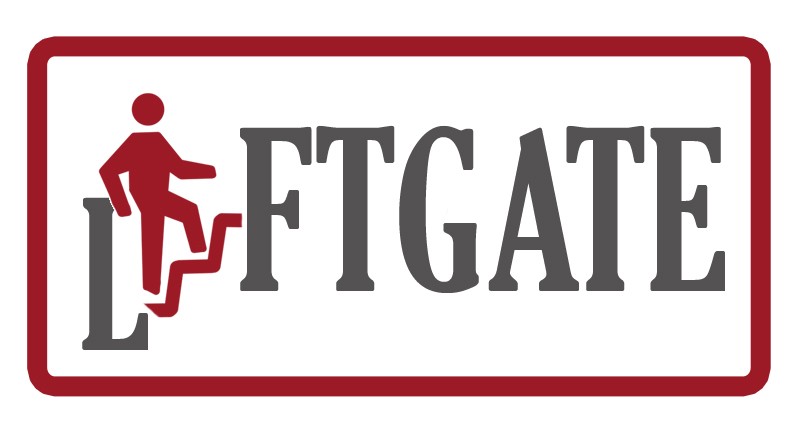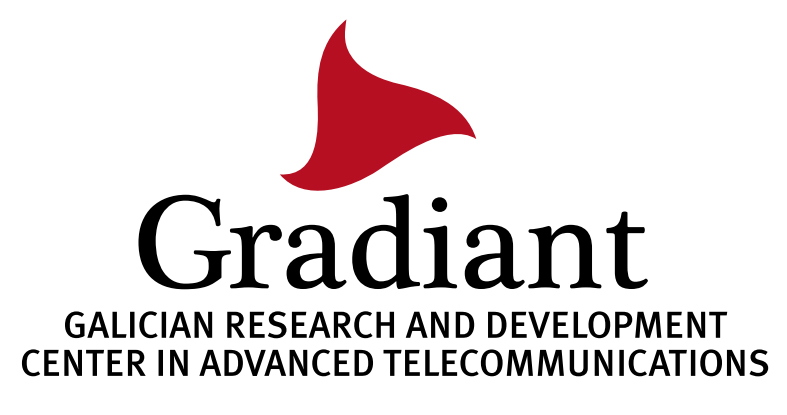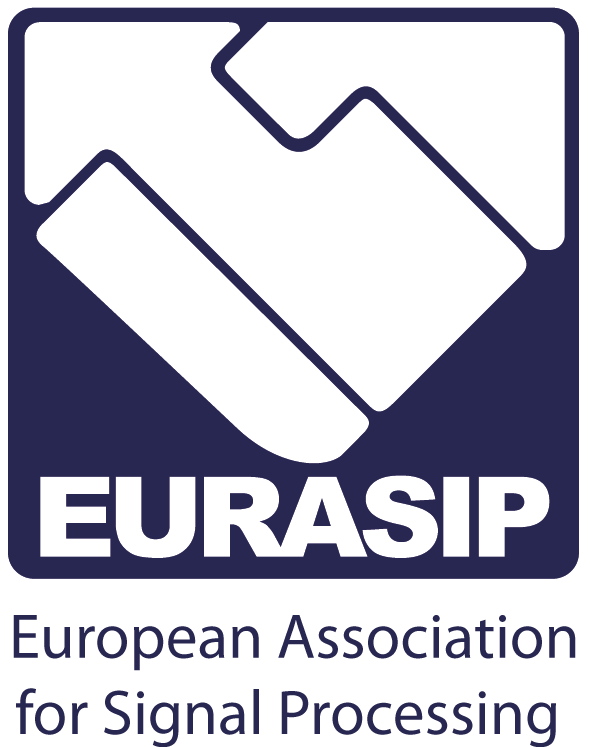Monday, June 23, 09:30 AM - Room Victoria
Modeling the Aggregator problem: the economic dispatch and dynamic scheduling of flexible electrical loads
Anna Scaglione
University of California Davis, USA
Abstract: The increasing need for fast-ramping generation capacity and costly reserves to balance the grid under high penetration levels of intermittent resources, have sparked great interest in designing new paradigms that allow electricity demand to respond to economic signals. It is expected that the grid will soon incorporate an access layer to manage the access to power by a set of flexible appliances. Aggregators are the entities that will interact with the wholesale market and manage large populations of flexible demand. The objective is for the Aggregators to utilize an interface that is safe for the grid and economically desirable for the consumers. In this talk we will highlight the design opportunities and challenges in dealing with the modeling problem behind the Aggregator design. Electrical Vehicles will be our case study to illustrate advances in the ex-ante modeling and the on-line scheduling of flexible loads.
 Professor Anna Scaglione (M.Sc.'95, Ph.D. '99) is currently Professor in Electrical and Computer Engineering at University of California at Davis. She joined UC Davis in 2008, after leaving Cornell University, Ithaca, NY, where she started as Assistant Professor in 2001 and became Associate Professor in 2006. Prior to joining Cornell she was Assistant Professor in the year 2000-2001, at the University of New Mexico. Dr. Scaglione is a Fellow of the IEEE since 2011 and was honored by both the Signal Processing and the Communication Societies. She is the Editor-in-Chief of the IEEE Signal Processing Letters, and served as Associate Editor for the IEEE Transactions on Wireless Communications from 2002 to 2005, and from 2008 to 2011 in the Editorial Board of the IEEE Transactions on Signal Processing from 2008, where she was Area Editor in 2010-11. She has been general chair of the workshop SPAWC 2005 in the Signal Processing for Communication Committee from 2004 to 2009, has been part of the SmartGridComm steering committee since 2010, and is currently in the Board of Governors of the Signal Processing Society. Dr. Scaglione is the first author of the paper that received the 2000 IEEE Signal Processing Transactions Best Paper Award. She has also received the NSF Career Award in 2002, is co-recipient of the Ellersick Best Paper Award (MILCOM 2005), and co-recipient of the 2013 IEEE Donald G. Fink Prize Paper Award. Her expertise is in the broad area of signal processing for communication systems and networks. Her current research focuses on studying and enabling decentralized learning and signal processing in networks of sensors. Dr. Scaglione also focuses on sensor systems and networking models for the demand side management and reliable energy delivery.
Professor Anna Scaglione (M.Sc.'95, Ph.D. '99) is currently Professor in Electrical and Computer Engineering at University of California at Davis. She joined UC Davis in 2008, after leaving Cornell University, Ithaca, NY, where she started as Assistant Professor in 2001 and became Associate Professor in 2006. Prior to joining Cornell she was Assistant Professor in the year 2000-2001, at the University of New Mexico. Dr. Scaglione is a Fellow of the IEEE since 2011 and was honored by both the Signal Processing and the Communication Societies. She is the Editor-in-Chief of the IEEE Signal Processing Letters, and served as Associate Editor for the IEEE Transactions on Wireless Communications from 2002 to 2005, and from 2008 to 2011 in the Editorial Board of the IEEE Transactions on Signal Processing from 2008, where she was Area Editor in 2010-11. She has been general chair of the workshop SPAWC 2005 in the Signal Processing for Communication Committee from 2004 to 2009, has been part of the SmartGridComm steering committee since 2010, and is currently in the Board of Governors of the Signal Processing Society. Dr. Scaglione is the first author of the paper that received the 2000 IEEE Signal Processing Transactions Best Paper Award. She has also received the NSF Career Award in 2002, is co-recipient of the Ellersick Best Paper Award (MILCOM 2005), and co-recipient of the 2013 IEEE Donald G. Fink Prize Paper Award. Her expertise is in the broad area of signal processing for communication systems and networks. Her current research focuses on studying and enabling decentralized learning and signal processing in networks of sensors. Dr. Scaglione also focuses on sensor systems and networking models for the demand side management and reliable energy delivery.
Monday, June 23, 02:00 PM - Room Victoria
Displacement Structure of Matrices - an Introduction (talk sponsored by EURASIP)
Thomas Kailath
Stanford University, USA
Abstract: It is the presence of special structure, and its exploitation, that occupy engineers and applied mathematicians in fields where standard general algorithms are well known, for example, Gaussian elimination for general systems of linear equations. Examples of structure are systems with Toeplitz (or Hankel or Cauchy or Vandermonde or…) coefficient matrices, for which there exist fast solution algorithms with many nice hardware and software features. However often the structure is implicit, e.g., as in matrices that are combinations of products of structured matrices and their inverses, and the existence of fast algorithms for such systems is not obvious. The concept of Displacement Structure is a uniform and powerful way of capturing and exploiting both explicit and implicit structure. For example, structured matrices and their inverses and products thereof all have low “ displacement rank”, a fact that enables the development of fast algorithms in many fields including communications and signal processing.
In this talk, we shall present an introduction to the fundamental concepts of the theory and note some recent developments and applications.
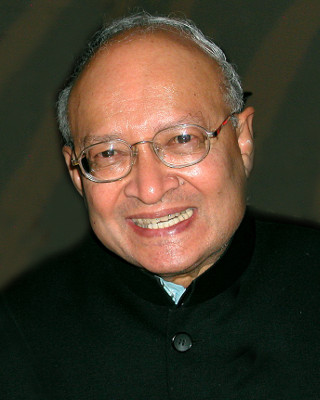 Thomas Kailath received the B.E. (Telecom) degree from the College of Engineering, Pune, in India, and S.M. (1959) and Sc.D. (1961) degrees in electrical engineering from the Massachusetts Institute of Technology. He then worked at the Jet Propulsion Labs in Pasadena, CA, before being appointed to Stanford University as Associate Professor of Electrical Engineering in 1963. He was promoted to Professor in 1968, and was appointed the first holder of the Hitachi America Professorship in 1988. He assumed emeritus status in 2001, but remains active with his research and writing activities.
Thomas Kailath received the B.E. (Telecom) degree from the College of Engineering, Pune, in India, and S.M. (1959) and Sc.D. (1961) degrees in electrical engineering from the Massachusetts Institute of Technology. He then worked at the Jet Propulsion Labs in Pasadena, CA, before being appointed to Stanford University as Associate Professor of Electrical Engineering in 1963. He was promoted to Professor in 1968, and was appointed the first holder of the Hitachi America Professorship in 1988. He assumed emeritus status in 2001, but remains active with his research and writing activities.
Kailath’s research and teaching at Stanford have ranged over several fields of engineering and mathematics: information theory, communications, linear systems, estimation and control, signal processing, semiconductor manufacturing, probability and statistics, and matrix and operator theory. He has also co-founded and served as a director of several high-technology companies. He has mentored an outstanding array of over a hundred doctoral and postdoctoral scholars. Their joint efforts have led to over 300 journal papers, several of which have received outstanding paper prizes; they have also led to a dozen patents and to several books and monographs, including the major textbooks: Linear Systems (1980) and Linear Estimation (2000).
Kailath received the IEEE Medal of Honor in 2007 for “exceptional contributions to the development of powerful algorithms for communications, control, computing and signal processing”. Among other major honors are the Shannon Award of the IEEE Information Theory Society; the IEEE Education Medal and the IEEE Signal Processing Medal; honorary degrees from universities in Sweden, Scotland, Spain, France, India and Israel; the Padma Bhushan, a high civilian award of the Government of India; the 2009 Spanish BBVA Foundation Prize for Information and Communication Technologies; membership of the U.S. National Academy of Engineering and the U.S. National Academy of Sciences; and, among others, foreign membership of the Royal Society of London, the Royal Spanish Academy of Engineering, the Indian National Academy of Engineering and the Indian Academy of Sciences.
Tuesday, June 24, 09:30 AM - Room Victoria
Label-Free Estimation and Tracking
Peter Willett
University of Connecticut, USA
Abstract: Multi-object estimation poses three questions: How many objects are in the scene? Where are there objects? And: Which object is which? Let’s ignore – at least for now – the first, which is admittedly very important but here is not germane.
To estimate the location of (say) two objects from prior information and measurements is, for those of you who like to think in these terms, an optimization. The familiar metric is mean square error, and to minimize it answers both the second and third questions. But suppose that we are interested only in the second question. We can recognize this a relaxation of a constraint in our optimization; can the best metric improve?
In this talk it is shown that it can, and the result is (unfortunately) called MMOSPA. We find a rich area of label-free estimation, both static and dynamic. Versions of the trackers are shown to beat coalescence problems for closely spaced targets. And for those of you who like labels, it is shown that labeling can be re-inserted to the estimates, but in a way that is perhaps more honest than for labeled ones, as a posterior label probability.
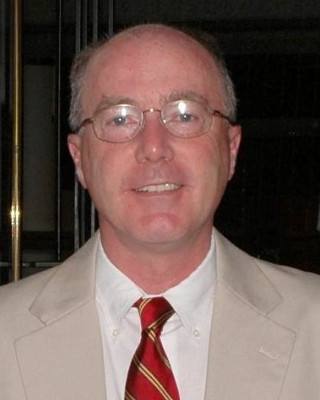 Peter Willett has been a faculty member in the Electrical and Computer Engineering Department at the University of Connecticut since 1986. Since 1998 he has been a Professor, and since 2003 an IEEE Fellow. His primary areas of research have been statistical signal processing, detection, machine learning, communications, data fusion, and tracking. He was editor-in-chief for IEEE Transactions on Aerospace and Electronic Systems from 2006-2011, and is now the VP for Publications for the IEEE AES Society. For 1998-2005 he was associate editor for three active journals – IEEE Transactions on Aerospace and Electronic Systems (for Data Fusion and Target Tracking) and IEEE Transactions on Systems, Man, and Cybernetics, parts A and B. He is remains associate editor for the IEEE AES Magazine, and ISIF’s Journal of Advances in Information Fusion, and is a member of the editorial board of IEEE’s Special Topics in Signal Processing journal and a senior editor for IEEE Signal Processing Letters. He has been a member of the IEEE AESS Board of Governors (2003-2009, 2011-) and of ISIF 2010-2013. He was General Co-Chair (with Stefano Coraluppi) of IEEE/ISIF International Conference for Information Fusion (ICIF) in Florence in 2006, again was Executive Co-Chair (with Wolfgang Koch) for ICIF in Cologne in 2008, and was also Emeritus Chair (with Darin Dunham and Amy Smith-Carroll) for ICIF in Chicago in 2011. He was Program Co-Chair (with Eugene Santos) of the IEEE Conference on Systems, Man, and Cybernetics, held in Washington, DC in October of 2003. He was Program Co-Chair (with Pramod Varshney) for the 1999 ICIF. He has been a member of the IEEE Signal Processing Society’s Sensor-Array and Multichannel (SAM) technical committee since 1997 and is now Vice Chair.
Peter Willett has been a faculty member in the Electrical and Computer Engineering Department at the University of Connecticut since 1986. Since 1998 he has been a Professor, and since 2003 an IEEE Fellow. His primary areas of research have been statistical signal processing, detection, machine learning, communications, data fusion, and tracking. He was editor-in-chief for IEEE Transactions on Aerospace and Electronic Systems from 2006-2011, and is now the VP for Publications for the IEEE AES Society. For 1998-2005 he was associate editor for three active journals – IEEE Transactions on Aerospace and Electronic Systems (for Data Fusion and Target Tracking) and IEEE Transactions on Systems, Man, and Cybernetics, parts A and B. He is remains associate editor for the IEEE AES Magazine, and ISIF’s Journal of Advances in Information Fusion, and is a member of the editorial board of IEEE’s Special Topics in Signal Processing journal and a senior editor for IEEE Signal Processing Letters. He has been a member of the IEEE AESS Board of Governors (2003-2009, 2011-) and of ISIF 2010-2013. He was General Co-Chair (with Stefano Coraluppi) of IEEE/ISIF International Conference for Information Fusion (ICIF) in Florence in 2006, again was Executive Co-Chair (with Wolfgang Koch) for ICIF in Cologne in 2008, and was also Emeritus Chair (with Darin Dunham and Amy Smith-Carroll) for ICIF in Chicago in 2011. He was Program Co-Chair (with Eugene Santos) of the IEEE Conference on Systems, Man, and Cybernetics, held in Washington, DC in October of 2003. He was Program Co-Chair (with Pramod Varshney) for the 1999 ICIF. He has been a member of the IEEE Signal Processing Society’s Sensor-Array and Multichannel (SAM) technical committee since 1997 and is now Vice Chair.
Tuesday, June 24, 02:00 PM - Room Victoria
Towards 5G
Angel Lozano
Universitat Pompeu Fabra, Spain
Abstract: With the 4th generation of wireless systems still being rolled out, challenges keep mounting: traffic demand doubles yearly and user needs and expectations keep growing at a very fast pace. Against this backdrop, the debate is open as to what shall come next in the evolution of wireless systems—what is loosely referred to as the 5th generation—and this debate stage can be a very fertile time for ideas to take root. This talk intends to contribute to the ongoing discussion, not from the perspective of a manufacturer, operator, or user, but from the perspective of a researcher. With that goal in mind, the presentation is organized around five reflections touching on aspects that relate to 5G but that also have broader conceptual implications in research.
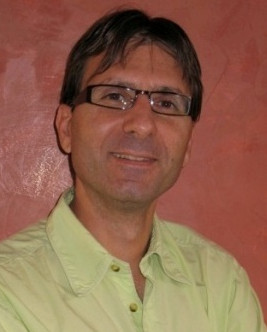 Angel Lozano is a Professor of Information and Communication Technologies at UPF (Universitat Pompeu Fabra) in Barcelona, Spain. He is also UPF's Vice-Rector for Research. Prof. Lozano received the Master of Science and Ph.D. degrees in Electrical Engineering from Stanford University, USA, in 1994 and 1998, respectively. In 1999, he joined Bell Labs (Lucent Technologies, now Alcatel-Lucent) in Holmdel, USA, where he was a member of the Wireless Communications Research Department until 2008. Between 2005 and 2008 he was also an Adjunct Associate Professor of Electrical Engineering at Columbia University, NY, USA. Prof. Lozano is an associate editor for the IEEE Transactions on Information Theory (since 2011), a former editor for the IEEE Transactions on Communications (1999-2009) and the Journal of Communications & Networks (2010-2012), has guest-edited various journal special issues, and is actively involved in committees and conference organization tasks for the IEEE. In particular, he is the Chair of the IEEE Communication Theory Technical Committee (2013-2014) and was elected to the Board of Governors of the IEEE Communications Society (2012-2014). He has further participated in standardization activities for 3GPP, 3GPP2, IEEE 802.20 and the IETF. Prof. Lozano has published extensively, holds 15 patents, and has contributed to several books. His papers have received two awards: the best paper at the 2006 IEEE Int’l Symposium on Spread Spectrum Techniques & Applications, and the Stephen O. Rice prize to the best paper published in the IEEE Transactions on Communications in 2008. He also received the Bell Labs President’s Gold Award in 2002 and the ICREA Academia Award from the Catalan Government in 2011.
Angel Lozano is a Professor of Information and Communication Technologies at UPF (Universitat Pompeu Fabra) in Barcelona, Spain. He is also UPF's Vice-Rector for Research. Prof. Lozano received the Master of Science and Ph.D. degrees in Electrical Engineering from Stanford University, USA, in 1994 and 1998, respectively. In 1999, he joined Bell Labs (Lucent Technologies, now Alcatel-Lucent) in Holmdel, USA, where he was a member of the Wireless Communications Research Department until 2008. Between 2005 and 2008 he was also an Adjunct Associate Professor of Electrical Engineering at Columbia University, NY, USA. Prof. Lozano is an associate editor for the IEEE Transactions on Information Theory (since 2011), a former editor for the IEEE Transactions on Communications (1999-2009) and the Journal of Communications & Networks (2010-2012), has guest-edited various journal special issues, and is actively involved in committees and conference organization tasks for the IEEE. In particular, he is the Chair of the IEEE Communication Theory Technical Committee (2013-2014) and was elected to the Board of Governors of the IEEE Communications Society (2012-2014). He has further participated in standardization activities for 3GPP, 3GPP2, IEEE 802.20 and the IETF. Prof. Lozano has published extensively, holds 15 patents, and has contributed to several books. His papers have received two awards: the best paper at the 2006 IEEE Int’l Symposium on Spread Spectrum Techniques & Applications, and the Stephen O. Rice prize to the best paper published in the IEEE Transactions on Communications in 2008. He also received the Bell Labs President’s Gold Award in 2002 and the ICREA Academia Award from the Catalan Government in 2011.
Wednesday, June 25, 09:30 AM - Room Victoria
Distributed Optimization over Network
Wotao Yin
University of California Los Angeles, USA
Abstract: There has been considerable recent interest in solving optimization problems with data stored over a network. For these problems we need techniques that process data locally yet converge rapidly to an (approximate) solution across the entire network. This talk reviews primarily first-order algorithms for large-scale optimization of the distributed or decentralized types. We emphasize on recognizing separable structures in a large set of signal processing and statistical learning problems and demonstrate that, through skillful uses of gradient, proximal, duality, and splitting techniques, massively parallel algorithms can be developed. Numerical results are presented to demonstrate the scalability of the parallel codes on typical unix clusters and Amazon EC2.
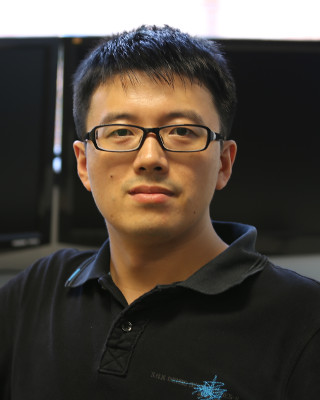 Wotao Yin is a professor in the Department of Mathematics at UCLA. His research interests lie in computational optimization and its applications in image processing, machine learning, and other inverse problems. He received his B.S. in mathematics from Nanjing University in 2001, and then M.S. and Ph.D. in operations research from Columbia University in 2003 and 2006, respectively. During 2006 - 2013, he was with Rice University. He won NSF CAREER award in 2008 and Alfred P. Sloan Research Fellowship in 2009. His recent work has been in optimization algorithms for large-scale and distributed signal processing and machine learning problems.
Wotao Yin is a professor in the Department of Mathematics at UCLA. His research interests lie in computational optimization and its applications in image processing, machine learning, and other inverse problems. He received his B.S. in mathematics from Nanjing University in 2001, and then M.S. and Ph.D. in operations research from Columbia University in 2003 and 2006, respectively. During 2006 - 2013, he was with Rice University. He won NSF CAREER award in 2008 and Alfred P. Sloan Research Fellowship in 2009. His recent work has been in optimization algorithms for large-scale and distributed signal processing and machine learning problems.
Wednesday, June 25, 02:00 PM - Room Victoria
Array Processing Underground
James H. McClellan
Georgia Tech, USA
Abstract: This talk will describe aspects of sensor array processing that have been successful in areas such as geophysics and ground penetrating radar. Some examples are land mine detection, sonic well-logging and micro-seismic monitoring. These applications employ wideband sensors and benefit from array processing when a complete frequency-wavenumber domain analysis of the space-time wavefield is performed. Furthermore, new systems increasingly use three-axis sensors where vector signals are processed to extract parameters such as polarization. On the signal processing side, theoretical advances have kept pace with the ever-expanding data sets produced by new sensors. In particular, new sparsity-aware methods provide powerful algorithms for locating isolated targets as well as extracting other attributes such as orientation.
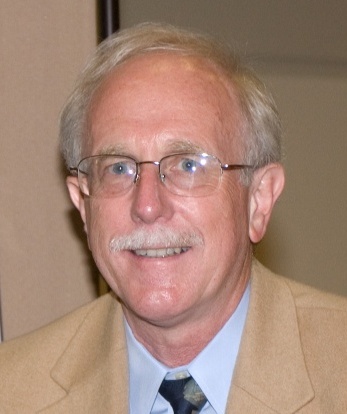 James H. McClellan (Life Fellow) received the B.S. degree in Electrical Engineering from L.S.U. in 1969, and the M.S. and Ph.D. degrees from Rice University in 1972 and 1973, respectively. From 1973 to 1982, he was a member of
the research staff at Lincoln Laboratory and then a professor at MIT. From 1982 to 1987, Dr. McClellan was employed by Schlumberger Well Services. Since 1987, he has been a Professor in the School of Electrical and Computer Engineering at
Georgia Tech, where he presently holds the John and Marilu McCarty Chair.
James H. McClellan (Life Fellow) received the B.S. degree in Electrical Engineering from L.S.U. in 1969, and the M.S. and Ph.D. degrees from Rice University in 1972 and 1973, respectively. From 1973 to 1982, he was a member of
the research staff at Lincoln Laboratory and then a professor at MIT. From 1982 to 1987, Dr. McClellan was employed by Schlumberger Well Services. Since 1987, he has been a Professor in the School of Electrical and Computer Engineering at
Georgia Tech, where he presently holds the John and Marilu McCarty Chair.
He is a co-author of the texts Number Theory in Digital Signal Processing, Computer Exercises for Signal Processing, DSP First: A Multimedia Approach, and Signal Processing First, which received the McGraw-Hill Jacob Millman award for an
outstanding innovative textbook in 2003. In 1998, Prof. McClellan received the W. Howard Ector Outstanding Teacher Award at Georgia Tech, and in 2001, the Education Award from the IEEE Signal Processing Society. In 1987, he received the Technical Achievement Award for work on FIR filter design, and in 1996, the Society Award, both from the IEEE Signal Processing Society. In 2004, he was a co-recipient of the IEEE Jack S. Kilby Signal Processing medal. Prof. McClellan is
a Fellow of the IEEE and a member of Tau Beta Pi and Eta Kappa Nu.

